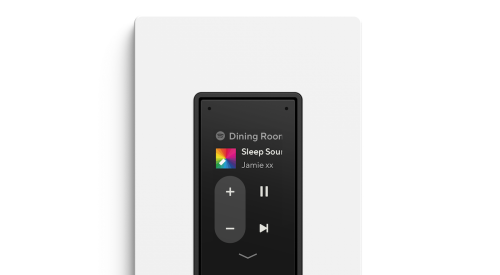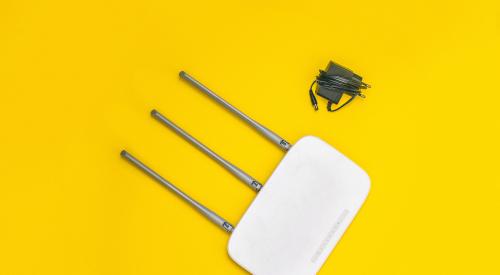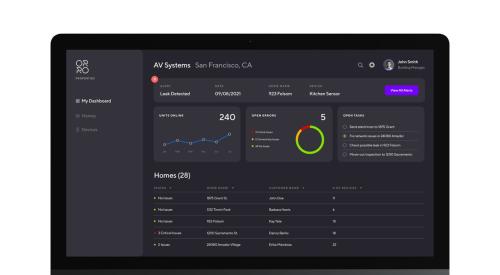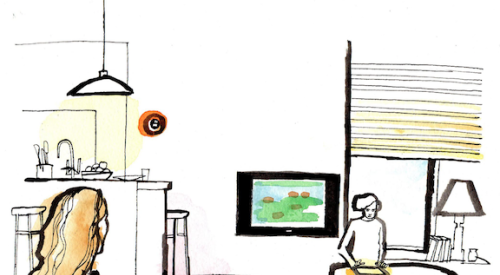Is Smart Home Technology Worth It?
There are three unique factors to consider when understanding why people see smart home technology and its integration improving daily life:
- Integrated smart homes make life more convenient
- Smart home features that deliver safety, wellness, and comfort
- How smart home integration helps with energy efficiency
Let's unpack each of these.
Integrated Smart Homes Make Life More Convenient
As a starting point, smart home technologies streamline how we control our homes, allowing us to change our environment to meet our needs with the tap of a button.
Some smart home systems even take convenience one step further by integrating multiple smart home products into a unified experience or learning from our patterns and automatically adjusting to us as we live our lives.
When Price Waterhouse Coopers conducted a smart home technology study, they asked several groups what matters most. Across the board, they found that people want convenience. Participants compared having smart home technology to having a “personal assistant that can do the things they forgot to do.”
Notably, convenience was critical to women. Women noted that smart home technology “represents another pair of hands and one less thing to remember on a long list of family responsibilities.”
With the increased convenience of our homes virtually running on auto-pilot, we free up more time to do what we love - whether that’s a focus on work, family, or something in between.
Smart Home Features That Deliver Peace of Mind, Wellness & Comfort
Peace of Mind
As Smart Home goes mainstream, users of smart home technology mention peace of mind and comfort as their primary motivators.
Peace of mind comes from feeling like they are in control and protected while they’re at home, and when they’re away.
At work (maybe post-COVID, that is), on an extended vacation, or even on the couch, the ability to control your home from a phone or tablet, to lock doors, monitor security cameras, control lighting, and be notified in case of smoke or fire are all critical to feeling safe.
According to McKinsey, people with a safety focus are most interested in remote video feeds, connected locks, and connected smoke detectors throughout their homes and solutions that help tie them all together into a single system or app.
Interestingly, 56% of the people surveyed didn't focus on the brand of the products they purchased. They aren't as brand-focused as we might expect; they're benefit-focused.
Wellness
Total wellness - including consistent, quality sleep - is vital in modern society. We all need restful nights to be productive during the day, and Human-Centric Lighting (HCL) helps us reach that goal.
HCL affects us while we sleep and while we go about our daily lives in our homes. Each of us experiences a natural, biological rhythm to our daily lives that ties into how we sleep. This rhythm responds directly to the light levels we experience throughout the day, and too much bright light or too much darkness can have adverse effects.
Auto-dimming lights and motorized shading both help maintain balanced lighting.
Smart home technology and HCL help provide a consistent balance for a homeowner that changes with them as the day unfolds.
Most companies providing human-centric lighting integrations - at this point - are focused on trying to mimic natural light as much as possible to help people feel better, sleep better, and enjoy their homes more than they would without this balance.
Beyond HCL, smart home technologies also support total wellness in other ways. In recent years, several exciting developments actively elevate our health and how we behave each day to keep us healthy.
Here are a few interesting examples:
- Ultraviolet disinfection lighting can sanitize surfaces in seconds to keep these surfaces as germ-free as possible.
- Bedroom mirrors can measure your blood flow and respiration to see if something is wrong.
- Wearables allow you to detect patterns in your behavior and program your other smart devices by these patterns.
As the focus on total wellness rises - with smart home technology playing a more central role in that experience - more of these innovations are sure to surface.
Comfort and “Touchless” Features
As we’ve fought through COVID, people are starting to think about a future where we can interact with our devices without having to touch them. The same is proving true for our homes.
At the 2021 Consumer Electronics Show (CES), touchless devices were everywhere. Companies are thinking about how faucets, toilets, doorbells, refrigerators, and more can operate in our homes without touch.
Touchless technologies can reduce germ transfer and help occupants stay healthy throughout the year.
In addition to the health considerations, the benefits of touchless technology also extend to comfort and utility. For example, the touchless tech can make it much easier for senior homeowners to do basic things like turning on the lights, which can require reaching up, walking extra distances, or a tough balancing act to get done.
How Smart Home Integration Helps With Energy Efficiency
Modern consumers increasingly exhibit a "green" mindset. This mindset influences the products they buy and how they expect energy options to integrate into their homes to help them conserve energy.
As we scramble from one thing to the next, maybe a little distracted, some typical behaviors lead to excess energy usage.
The McKinsey study highlights three common energy behaviors that homeowners are worried about:
- 51% admitted to leaving lights on in rooms they aren't in
- 41% have left appliances or the TV on even when not in use, and
- 35% left the air conditioner running even when it's comfortable in the home
With helpful smart home technologies integrated into their homes, people don't waste energy as often.
This change leads to better energy efficiency, lower costs for the homeowner, and reduced stress spent managing their homes.
People can turn lights off when they’re not home and when they aren’t using different rooms. Appliances and TVs can automatically turn off when not in use. And programmable thermostats can be set to keep things comfortable and cut off when it's overkill to be running.
With the increased energy efficiency delivered by smart home systems, homeowners feel more responsible and keep extra money in their pockets.
In Conclusion
We're all searching for a better life. The definition of that better life is different for everyone.
But if you asked 10 people, most of those people would mention their homes and comfort level in those homes. Smart home technology is helping homeowners become more comfortable than ever before. Customizing their lives in a way that would have seemed impossible even 30 years ago.
Smart homes can indeed make life better.
As homebuilders you can capitalize on these beliefs by offering the technologies people want to customize the home of their dreams.
When you offer smart home technology as a builder, you’re giving people what they want. This helps you to stand apart from your competition. Especially if you’re the only builder in the area offering these features. Or, when your customer is considering you and a direct competitor who doesn’t offer smart home features.
For more on what homebuyers want in smart home features, read our report "How Smart Homes Make Life Better."














